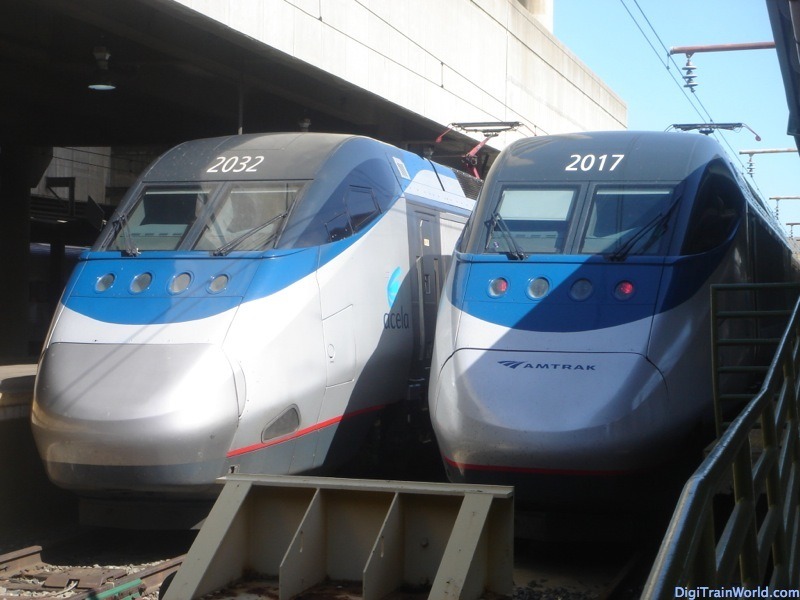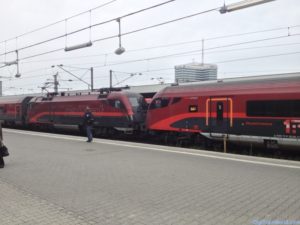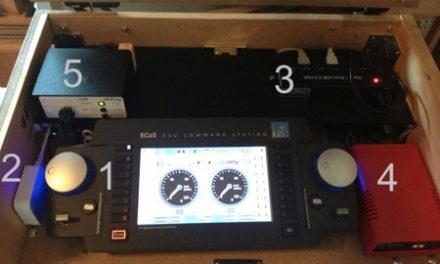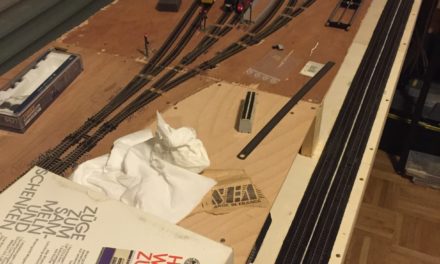A few thoughts as a new year approaches…
Christmas is almost there, I hope all of you and your children have lots of miniature trains on your list for Santa!
I was in the US again last week, and I’d like to say a few words about how trains are seen on both sides of the Pond.
Europeans and Americans like to think they are different. In fact, anyone who travels a lot between continents or who works for international companies know this is exaggerated. As far as the view on trains is concerned however, I think we can all agree there is a huge cultural gap.
Shortly put: in America, trains are outdated, while in Europe, they are a fact of everyday life, now more than ever.
The state of the Union (Pacific)
In the first “Hunger Games” movie (2012), the poor candidates to the slaughter games are brought to the Capitol city in a sleek magnetic levitation train. The sequence starts with a revealing sentence from the crazy Capitol lady (played by Elizabeth Banks): “200 miles per hour and you can barely feel a thing“. (200mph = 321kmh)
This is a very sad sentence to hear for anyone who knows anything about train. The premise of the authors (who admittedly don’t care about trains have have no reason to), is that in the far future, magnetic levitation trains will only achieve speeds of 321kmh. This sentence is probably meant as an impressive show of the Capitol’s technological advancement; and I am guessing this works for many American viewers.
The problem of course, is that 320kmh is precisely the commercial speed of the newest European or Asian high speed lines, such as the high speed line between Paris and Germany (the “LGV East“). Shortly put: there is absolutely nothing futuristic about a train ride at 320kmh, and there is no need for a Maglev train to achieve that speed.
The current only commercially operating Maglev (the Shanghai Airport Maglev built by the Germans) casually reaches 431kmh (268mph) everyday. The biggest Maglev project currently in construction, the Chūō Shinkansen or Linear Express, will link several Japanese cities in 2021 at top speeds of 505kmh (313mph).
The reality of the United-States is of course very different than the one in Europe. Distances are far greater, the car is culturally more important, even at the heart of big cities. There are recurring debates about high speed lines projects (e.g. in California), but they always turn into politically oriented debates (Democrats vs. Republicans…). I can’t say anything about these projects, but we – as Europeans – need to understand that trains in America and in North-America in general have long past their hour of glory.
The only “high speed” train in North America is said to be the Acela Express, from Boston to Washington DC, through New-York and Philadelphia. I took this train once between NYC and DC. I am sorry if I offend any of my friends in America, but if this is your idea of High Speed…then I understand nobody dreams about it at night. The train barely reaches a top speed of 240kmh (150mph), and actually averages at 110kmh (70mph).
The interesting fact about this train, is that it’s not high speed at all, for several reasons. Firstly, many countries don’t consider anything high speed below 250kmh, but that’s a detail. In fact, this train actually shares most of its tracks with regular trains (including freight), which makes actual high speed impossible.
What’s also interesting to know, is that high speed in the US won’t happen anytime soon for two reasons. Firstly, Amtrak (the American national train company) has absolutely no experience in high speed. Japan started in 1960s, France in the 70s and so on. High speed rail is not rocket science, but it’s not everyday engineering. This is why the projects in California have called for international bidders from Europe or Japan. However, I have no reason to think Amtrak would be unable to learn. The real problem in the United-States is a rule from 1920, that says that trains must be built so they can withstand a crash of 800,000 pounds. This rule was precious at a time when there was no way to monitor tracks, but now clearly prevents any real high speed train from entering service (read this interesting opinion here). This why American trains are so bulky: it’s not just because Americans like everything bigger, it’s also because they have to be bulky!
In Europe or Japan, of course trains must withstand some crashes, but building light is essential to high speed and perfectly safe and authorised. High speed tracks and trains are all monitored in real time, so that a crash is virtually impossible. In fact, if we except the crash in China 3 years ago due to cheap and fast construction, the only and deadliest High Speed crash had nothing to do with train collision (the Eschede Train disaster in Germany).
But enough facts. The reality is, there are no efficient rail services in North-America, so no one can blame the general public for seeing trains as an old transportation system. They are “good for students, poor people, or nostalgic old guys who have time to loose”. In fact, train companies even emphasize the fact that they are not competitive. I remember looking for a train connection between Montreal and Quebec City. The Canadian railway company VIA Rail emphasized… the nice views along the way! Now that may seem natural to anyone from Canada, but for me as European, I was looking for a fast and efficient transportation methods between two points…and somehow I had the naive feeling the train might have been an option!
Europe on the line
I had the chance to live in several European capitals, including Brussels. With the Thalys high speed train, I could reach Paris in an 1h20 min, Amsterdam, Cologne in about 2 hours, and London in less than 2 hours with the Eurostar trains. Many people in Europe, though they don’t use high speed every day, casually include rail as option when looking to travel for the holiday or business meetings.
From Brussels, to a meeting in Paris, nobody in their right mind would take a plane and loose 2 or 3 more hours (in fact, the plane companies stopped nearly all flights, except a few per day to ensure connecting transatlantic services).
The history of High-Speed in Europe is fascinating, with France being the pioneer with its TGV, and huge investments into publicly funded high speed lines. Since then, Germany has built the ICE trains – now probably the most exported high speed trains, but sadly has very few actual high speed sections. Spain recently developed an extensive network (despite criticisms), and England – surely convinced by the Eurostar adventure to the continent – has just announced the first national high speed line project.
The rule of thumb here, is that any direct high speed train ride of less than 3 hours will likely kill the airline links between two cities. This is has been proven in Paris, London, Brussels, Marseille, Madrid…). So Europeans are in a totally different paradigm: trains are actually not a thing of the past, they are a thing of the future, since many high speed lines are still in constructions.
I wouldn’t want my American readers to think all Europeans take the train. People with no access to high speed lines still fly regularly, and any normal business person will not use the train on large distances, when the plane is faster. I would say that Europeans have – ironically – no “sentimental” view on rail transportation: it is neither a cute old transportation method, nor a super trendy thing. It’s just a viable option to consider in many cases.
Again, this story is not meant as a lesson to North-America. Many other parameters are to be taken into account. For example, European cities have – historically – better transportation systems and smaller sizes. Building a high speed line to Los Angeles may seem like a great idea…but what are people supposed to do when they arrive here and can’t go on to their appointements without renting a car?
The future will tell…
Japan will build the first real Maglev line. Will the technology pick up elsewhere, despite the the crazy cost of building elevated tracks? I do not know, and we will have to wait 15 to 20 years to see.
Europe will continue to extend its High Speed network, encouraged by the European Union that sees it as an essential incentive for business. Maybe, someday, the US will see a few high speed lines flourish here and there…
The airlines companies are fearing further developments of high speed on short distances, but they have nothing to fear for medium or long trips. The plane will remain an essential part of the modern life, and I am glad it will. Even for someone who has an interest in trains, planes remain a fascinating thing and keep their USP: they actually fly, something a Maglev 2 inches above the track can’t really replace!
In the meantime, I can only regret that the feeling Americans have about railroads may translate into an even faster death for model trains. It’s one thing to have a hobby go out of fashion, but if the original also becomes deprecated, that leaves even fewer chances for survival. How can a young guy in Phoenix Arizona (that has no more train station) can believe it is trendy to buy a model train?
I will conclude this short note on a quote from the French engineer and war hero Louis Armand:
“If railroads survive the 20th century, they will be the transportation of the 21st.”
(“Si le Chemin de Fer survit au XXéme siécle, il sera le transport du XXIéme.”)
Happy holidays, merry Christmas, and as the Germans say: “Slip well into the new year” (Guten Rutsch) !










